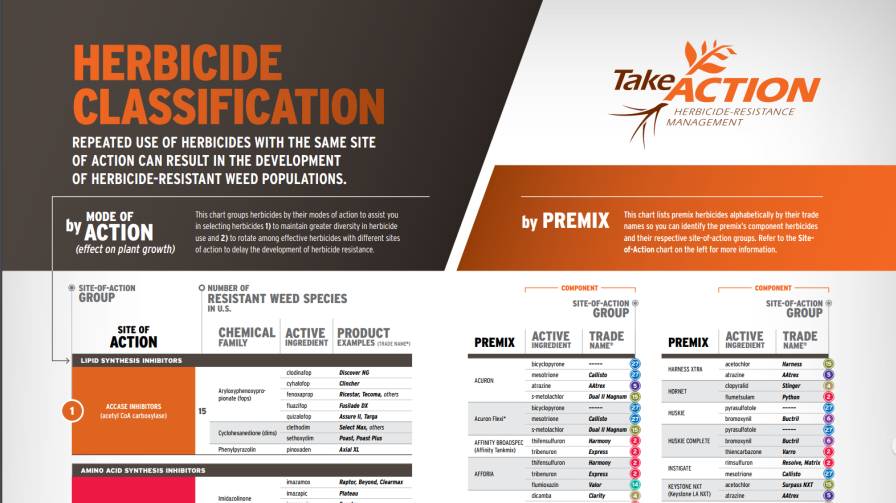New Chart Aids Selection Of Diverse Site Of Action Herbicides
The evolution of herbicide-resistant weeds requires close attention to which herbicides belong to which site of action group when adopting your herbicide program, writes Amit Jhala, University of Nebraska-Lincoln Extension Weed Management Specialist, on the CropWatch website.

Use the Take Action chart to maintain diversity in herbicide use, and rotate among effective herbicides with different sites of action to delay the evolution of herbicide-resistant weeds. Click image to enlarge.
These site groupings are based on a classification by the Weed Science Society of America and include a numbering system to help growers select a herbicide program that provides for site of action diversity. Each herbicide site of action is given a group number which is found on the first page of most herbicide labels. This chart can be used to select herbicide(s) that belong to different sites of action.
Avoid repeat applications of herbicide(s) that belong to the same site of action group; however, simply including herbicides that belong to multiple sites of action is not sufficient. The different sites of action must also be effective against herbicide-resistant weeds or hard-to-control weeds. The chart also shows the number of weed species with resistance to the site of action.
Take Action on Weeds: Herbicide Resistance Management is a national, multi-partner initiative to help farmers manage their herbicide programs to avoid further development of herbicide-resistant weeds. The chart was developed with funding from the United Soybean Board Soybean Checkoff and private industry.






